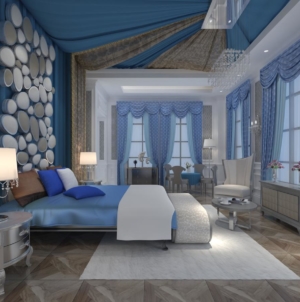-
Cool Picture Effects - September 4, 2018
-
Portrait Photography Tips That’ll Add a WOW Factor to Your Photos - September 3, 2018
-
Photography Tips for Taking Awesome Pics on Your Digital Camera - September 2, 2018
-
Fashion Photographer Salary - September 1, 2018
-
How to Set Up a Quick DIY Photo Booth in No Time - August 31, 2018
-
Do Not Miss These Tips for Shooting Stunning Black and White Photos - August 30, 2018
-
Epic Senior Picture Ideas That’ll Help You Cherish Your Memories - August 29, 2018
-
Incredibly Creative Poses for Family Photos - August 28, 2018
-
Get the Perfect Snap of Your Newborn With These Photography Ideas - August 27, 2018
-
Newborn Photography Poses That Capture the Special Moment Perfectly - August 26, 2018
Expert Tips for Blue Hour Photography
The blue hour is the time between twilight and night. It usually lasts for much, much less than an hour – just a few minutes in some cases and regions.
The blue hour is a favorite time for many photographers. Though the golden light that precedes it is much more popular, blue light photography is an exciting avenue for photographers. Many photographers pack up when the sun goes down, and remain completely ignorant of the beautiful blue light that follows it.
Blue light has its own set of virtues and difficulties – the least of which is actually being able to use the tiny window of the misguided term, blue ‘hour’. The dominant hues in the blue hour are actually purples, steely grays and magentas. Also, the ‘hour’ usually lasts for less than half that, and more often than not even less than that.
The key to capturing great blue hour photographs is, more than anything else, knowing what to frame. Unlike the golden light during sunsets, which makes everything look prettier, blue light is not so generous and benevolent. Silhouettes are tricky to capture in blue light without an artificial light source, since not much is discernible against the advancing wall of black in the background. Buildings with their own lighting, such as cityscapes, churches, and factories, are the subjects to concentrate on while shooting in the blue hour. The contrast between the internal lighting and the blue-purple background is the most sought-after setting in blue hour photography.
Landscape shots in the delicate, undulating time between the golden hour and the blue hour are also beautiful. Here, the contrast is provided by natural elements: remnants (or the first signs) of golden light, white clouds, etc. Here’s an example of this technique.


Here’s how to make full use of the tricky blue hour.
Use a tripod
The blue hour is actually the initial period of night, and planning to shoot in it without a tripod is like planning to arrive at a gunfight with a knife. You may as well shoot with the lens cover on!
Shoot static subjects
Don’t try to capture portraits in the blue hour; those are best dealt with early in the golden hour. Pitch static objects – preferably those with artificial lighting – against the constant, blue background to achieve the best results.


… But portraits are not impossible
Capturing portraits in the blue hour is tricky, but possible if there is a significant secondary source of light, such as a bonfire. Without such sources of light, candid portraits are impossible in blue light, since there is too much motion and not enough light. A secondary light such as a fire provides a beautiful contrast with the blue overtones, and perfectly illuminates the face of the subject.
Slow shutter speed, high f-number
Continuing on from the last point, use the blue light mainly for landscapes. Unless it is a dazzling cityscape, keep the aperture open. If there are other light sources (windows, street lights, etc.), keep the f-number around 22, and slow down the shutter speed as much as you have to. This allows you to capture the details so helpfully illuminated by the light, while keeping the beautiful blue background.
Plan ahead
As with any photography session, planning the shoot is crucial. Since the blue hour consists of a relatively tiny period of time, caught unawares is the last thing you want to be. Scout your best locations beforehand, and be ready with your equipment before sunset.
Keep shooting
Once you have set up, keep shooting – sunsets aren’t exactly ugly, are they? Lighting conditions change rapidly after sunsets, and the perfect mixture of contours, artificial lighting, and blue light could just be available for a matter of moments.


If only the photographer of the picture on the left had waited for a few moments, he would have been able to capture the perfect mixture of natural and artificial lights, and an excellent composition. Always keep your camera ready, and only stop the session when the only option is to use the flash.
Blue light, when aided by the last embers of sunlight, wraps the world in a stunningly beautiful blanket. In a matter of moments, the sky casts a shroud on the day and takes on the garb for the night. In such a delicately balanced moment, timing is everything. Be ready to pounce when a beautiful frame emerges, and for a change, make hay immediately after the sun has set.































